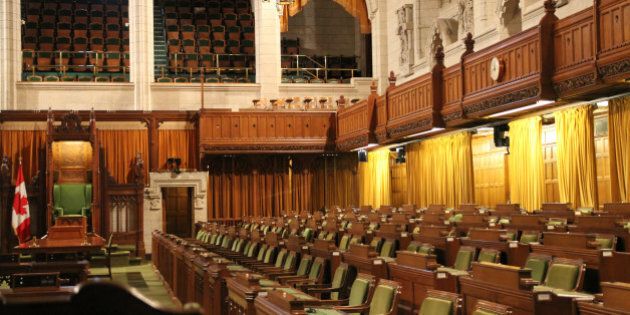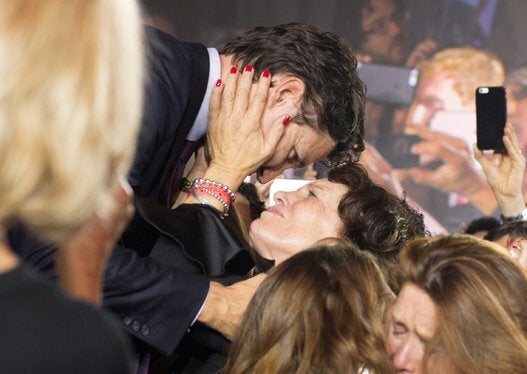
The first post in this series, available here, examines our existing first-past-the-post (FPTP) electoral system and how the distorted balance of power it produces affects decisions that are ultimately made by parliament and our government. This post examines our FPTP electoral system in greater detail as well as why options for reform being discussed are worth serious consideration.
Canada's First-past-the-post Electoral System
At the riding level, the candidate with the most votes wins in a FPTP system. When only two candidates are running, the winner would normally receive over 50 per cent of votes cast. When three or more candidates contest an election -- as is frequently the case in Canadian federal elections -- it is not uncommon for the winner to receive well below 50 per cent of the votes cast and for the majority of voters to have voted, instead, for other candidates. When the total number of votes cast are tallied at a regional or national level, the number of votes each party received reflects their share of the "popular vote."
A quick review of our history reveals that, out of the 29 general federal elections since 1921 -- when Canada became a multi-party system -- only five delivered a governing party with 50 per cent or more of the popular vote, nationwide. While 11 of the remaining 24 elections resulted in minority governments, 54 per cent of the elections resulted in majority governments.
The last time a majority government received 50 per cent or more of the popular vote was 1984, when the Progressive Conservative Party received 50.03 per cent of the popular vote. Prior to that, the Progressive Conservative Party received 53.7 per cent of the popular vote in 1958, and the Liberal Party of Canada received 54.9 per cent, 50.1 per cent and 50 per cent of the popular vote in 1940, 1949 and 1953, respectively.
The last two general elections saw the Liberal and Conservative parties each awarded a 54 per cent seat share in the House of Commons for a 39.5 and 39.6 per cent share of the popular vote, respectively. In essence, the over 60 per cent of the electorate who voted for another political party are being represented by 46 per cent of House of Commons seats because of the way our current electoral system works. Another, more troubling way of looking at it, is that the 60 per cent of the population who voted for another candidate might very well feel that they effectively have no representation because they did not vote for the individual who was ultimately named MP for their riding.
Our existing FPTP electoral system is frequently said to produce stable governments and to encourage broadly based, accommodative, centrist parties -- because political parties know they need to appeal to as wide a cross-section of voters as possible in order to win elections. However, when one considers the volume of policies and programs that are regularly revamped when the balance of power shifts between Canada's "centrist" (i.e., Conservative and Liberal) political parties, the validity of this assertion becomes debatable.
While some segments of the population no doubt support the changes and deem them to be "the right thing to do" the inescapable conclusion is that persistently undoing what's been done in the past utilizes vast amounts of time and resources that might otherwise have been devoted to furthering the evolution and development our country. It might be argued, in fact, that when one looks back over decades the Government of Canada is not as stable as we all might like to think.
It is worth highlighting again, here, that popular vote results achieved under our existing electoral system are not necessarily a good indication of how people would have voted under a PR-styled system or of how they might vote in the future. Research tells us, though, that under a more proportional electoral system many voters would alter their vote choice to support smaller parties. In short, our current electoral system -- which regularly bestows 100 per cent power to false majority governments -- is simply not well suited to the multi-party democracy that Canada became almost a century ago.
If not this, then what?
There are a number of proportional representation (PR) electoral systems that distribute power in a manner that more closely reflects how the electorate has voted. If a political party receives 39 per cent of the vote, a PR-styled electoral system is designed to provide them with a similar amount of seats in the House of Commons. Because the balance of power more closely reflects how voters vote, in a multi-party country like Canada a PR-styled system could serve to incentivize collaboration toward common ground public interest goals -- rather than competition between parties vying for power.
If false majorities become a thing of the past, a more accurate division of power -- when complemented by effective attitudes and behaviours on the part of all parliamentarians and members of government -- lends itself to decision-making by our representatives that is informed by more robust debate and a cooperative spirit. The short videos available through this link describe a number of PR-styled electoral systems.
The third and final post in this three-part series features information, tips and links to websites that will be useful to Canadians who want to engage in the electoral reform debate.
Follow HuffPost Canada Blogs on Facebook
MORE ON HUFFPOST:
